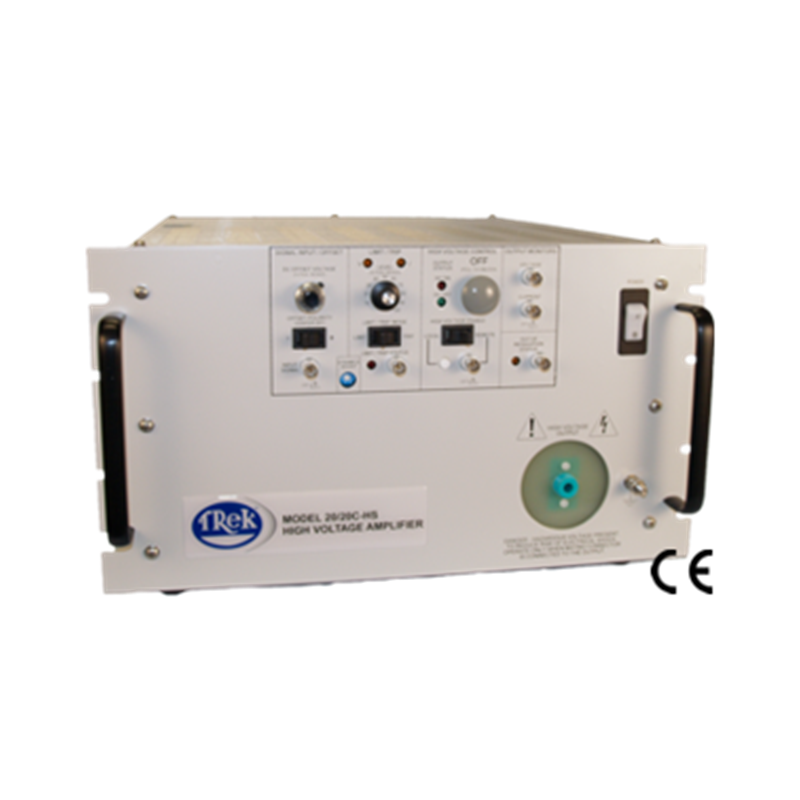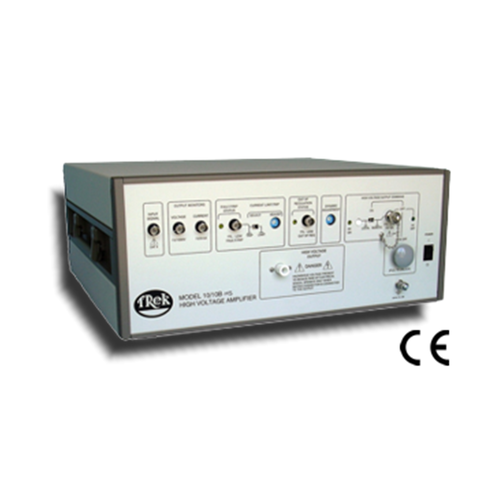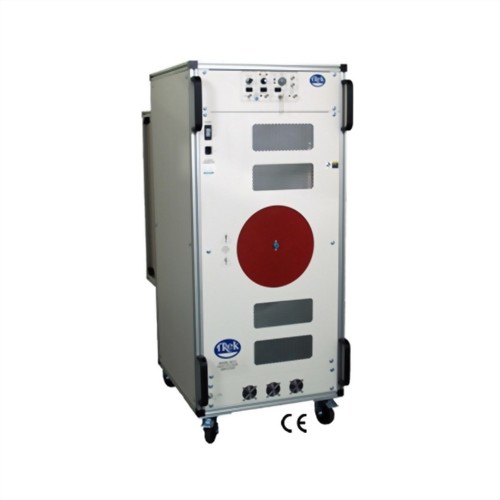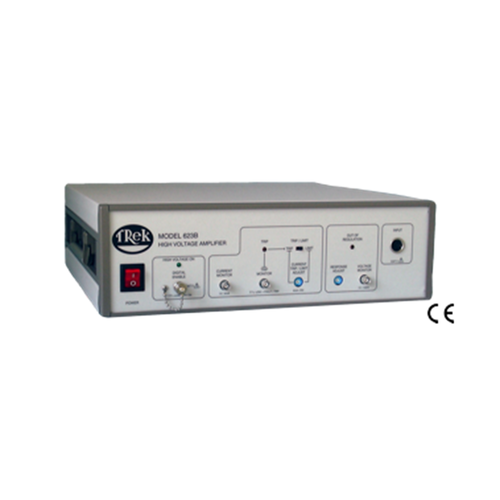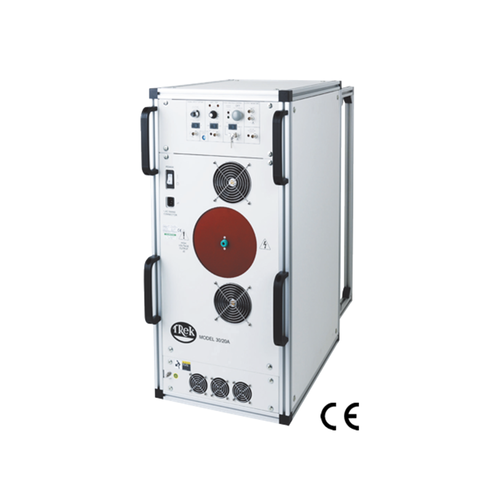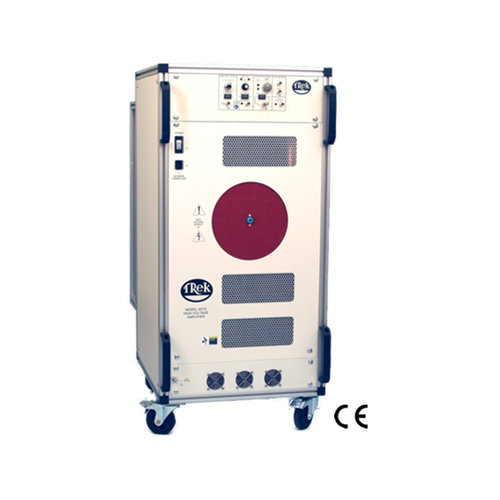Trek 20/20C-HS 高速高壓放大器
Advanced Energy’s high-speed Trek 20/20C-HS high voltage amplifier is DC-stable. It is used in a vast variety of industrial and research applications such as insulation breakdown and delta tan testing, electrostatic deflection, and ion beam steering.
• Output Voltage: 0 to ±20 kV DC or peak AC
• Output Current: 0 to ±20 mA DC or 60 mA peak AC for 1 ms (cannot exceed 20 mA RMS)
• Slew Rate: Greater than 800 V/µs
• Large Signal Bandwidth: DC to greater than 5.2 kHz (1% distortion)
• Gain: 2000 V/V fixed
The non-inverting Trek® 20/20-HS high voltage amplifier features an all-solid-state design, high slew rate, ample bandwidth, and low-noise operation. It’s four-quadrant, active output stage sinks or sources the current into reactive or resistive loads throughout the output voltage range. For demanding highly capacitive or reactive loads, this type of output is essential to enable accurate output responses and high slew rates.
Benefits
- Achieve high accuracy with a closed-loop system
- Drive capacitive loads via a four-quadrant output
- Rely on ultra-accurate outputs thanks to low-noise operation
- Take advantage of nearly maintance-free operation and solid-state design
- Reliably use in various applications
Dimensions: 279 mm H x 482 mm W 654 mm D (11” H x 19” W x 25.75” D)
Weight: 24.9 kg (55 lb)
HV Connector: Caton High Voltage Connector
BNC Connectors: Amplifier Input, Voltage Monitor, Current Monitor, Remote High Voltage ON/OFF, Out of Regulation Status, Fault/Trip Status
Temperature: 0°C to 40°C (32°F to 104°F)
Relative Humidity: To 85%, noncondensing
Altitude: To 2000 meters (6561.68 ft.)
- DC-stable for programmable supply applications
- NIST-traceable calibration certificate provided with each unit
- Short-circuit protection for safeguarding equipment
- CE compliant (230 VAC unit only)
- Local and remote high voltage On/Off capabilities
- Electrostatic deflection
- Electrophoresis
- Electrorheological fluids
- Electro-optic modulation
- Material poling
- AC or DC biasing
- Delta tan testing
- Electrocoalescence
- Electrospinning
- Ion beam steering
- Particle accelerators
- Mass spectrometers
- Material characterization
- Ferroelectrics
- Atmospheric plasma
- Dielectric barrier discharge
- Fusion research
- Insulation breakdown testing


